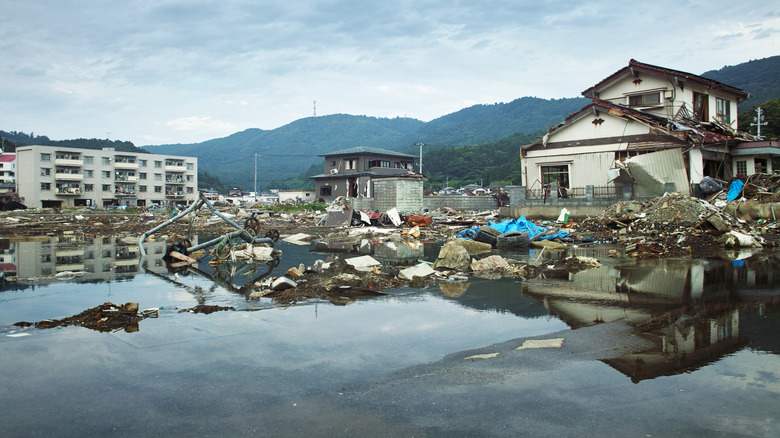What Types Of Earthquakes Cause Tsunamis?
Tsunamis are some of the most powerful natural phenomena, but they're also some of the least frequent, causing damage across local shores an average of twice a year and on faraway shores an average of twice per decade. Nearly 90% of tsunamis are natural disasters caused by earthquakes, but not all earthquakes form tsunamis: A few conditions have to be met first.
First, tsunamis are what happen after underwater earthquakes, quakes close enough to the ocean floor, or quakes that send landslides into the ocean — all displacing a great deal of water. The quake must also fracture the Earth's surface but at no more than 70 kilometers deep, and it must cause vertical seafloor movement. Last but not least, the seismic activity must be 6.5 magnitude or stronger.
Tectonic earthquakes on reverse or thrust faults are the most common type to meet these conditions because of what happens underground during the earthquakes. As two tectonic plates mash into each other, one (the subducting plate) slides under the other (the overriding plate). When the overriding plate gets stuck on the subducting plate, pressure builds up underneath and causes a distortion. The edge of the overriding plate eventually breaks free, and the pressure sends it springing upward, displacing the water above. However, even quakes on normal and strike-slip faults can cause tsunamis to happen.
How destructive can earthquakes and tsunamis be?
Generally, tsunamis can range from micro to mega in size. The types of tsunamis that develop and the amount of damage tsunamis cause depend on how strong the earthquakes are and how close they occur to land.
Quakes between 6.5 and 7.5 magnitude don't typically cause disastrous waves, but small changes in sea level can be seen near the epicenter. Destructive tsunamis more commonly result from magnitude 7.6 to 7.8 earthquakes, especially over land that's close to the epicenter. When quakes reach 7.9 magnitude or stronger, they can cause destruction on land near the epicenter and in broader regions, and especially strong ones can lead to magnitude 7.5 or stronger aftershocks that trigger additional tsunami waves. These are the most likely to destroy property, cause injuries, and take lives.
Tsunamis can reach distant locations because of how fast they travel across deep water. Where the mid-Pacific reaches a 3-mile depth, tsunami waves can be only about 1 foot high but travel at over 430 miles per hour. As they approach land and shallower water, they can grow as high as 80 feet and slow down, but not slow enough to outrun the speed of the crest as it topples over. That said, even tsunamis that are only 6 feet high can produce currents strong enough to knock people over.

